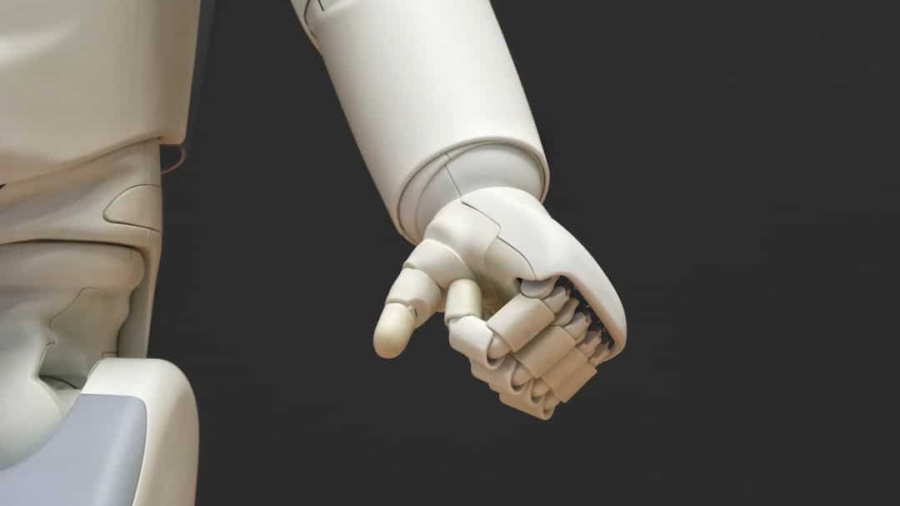The intersection of artificial intelligence (AI) and robotics has ushered in a new era in the field of prosthetics technology, fundamentally transforming the way individuals with limb loss experience mobility and functionality. Historically, prosthetic devices were rudimentary, often limited to basic mechanical functions that did not adequately replicate the natural movement of human limbs. However, advancements in AI-driven robotics have led to the development of sophisticated prosthetic systems that can adapt to the user’s movements and environment, providing a more intuitive and responsive experience.
This evolution is not merely a technological upgrade; it represents a paradigm shift in how prosthetics are designed, manufactured, and utilized. AI-driven robotics in prosthetics technology encompasses a range of innovations, from smart sensors that detect muscle signals to advanced algorithms that enable predictive movement. These technologies work in concert to create prosthetic limbs that can learn from the user’s behavior, improving their performance over time.
For instance, modern prosthetic devices can now interpret the user’s intentions through electromyography (EMG) signals, allowing for more natural and fluid movements. This integration of AI not only enhances the functionality of prosthetics but also empowers users by restoring a sense of agency and independence that was often lost due to limb loss.
Key Takeaways
- AI-driven robotics in prosthetics technology is revolutionizing the field by enhancing functionality and improving user experience.
- Artificial intelligence plays a crucial role in advancing prosthetics by enabling personalized and adaptive control of robotic limbs.
- The integration of robotics and prosthetics is leading to enhanced functionality, allowing users to perform a wider range of tasks with greater ease.
- AI-driven prosthetics are improving user experience and quality of life by providing more natural and intuitive control over robotic limbs.
- The future of prosthetics is being shaped by AI-driven innovations and developments, offering new possibilities for enhanced mobility and independence for users.
The Role of Artificial Intelligence in Advancing Prosthetics
Artificial intelligence plays a pivotal role in advancing prosthetics by enabling devices to process vast amounts of data in real-time, allowing for more precise control and adaptability. Machine learning algorithms analyze user movements and preferences, creating a personalized experience that evolves with the user.
This adaptability is crucial for users who require their prosthetics to function effectively in diverse environments. Moreover, AI enhances the communication between the user and the prosthetic device. Through advanced signal processing techniques, AI can interpret subtle muscle signals that indicate the user’s intent to move.
This capability allows for smoother transitions between different actions, such as standing up, walking, or picking up objects. The result is a more seamless integration of the prosthetic into the user’s daily life, reducing the cognitive load associated with operating the device. As AI continues to evolve, its role in refining these interactions will only become more significant, leading to even greater advancements in user experience.
The Integration of Robotics and Prosthetics for Enhanced Functionality

The integration of robotics into prosthetics has led to remarkable enhancements in functionality that were previously unimaginable. Robotic prosthetics are equipped with motors and actuators that mimic the natural movement of human limbs, providing users with a level of dexterity and strength that traditional prosthetics could not offer. For instance, bionic hands can now perform intricate tasks such as typing on a keyboard or grasping delicate objects with varying degrees of pressure, thanks to advanced robotic mechanisms that replicate human-like grip strength.
Additionally, the incorporation of robotics allows for dynamic adjustments based on real-time feedback from the environment. Sensors embedded within robotic prosthetics can detect changes in terrain or obstacles, enabling the device to adjust its movements accordingly. This feature is particularly beneficial for users who engage in outdoor activities or sports, as it enhances their ability to navigate complex environments safely and effectively.
The synergy between robotics and prosthetics not only improves physical capabilities but also fosters a sense of confidence and empowerment among users.
AI-Driven Prosthetics: Improving User Experience and Quality of Life
AI-driven prosthetics significantly enhance user experience by prioritizing comfort, usability, and personalization. One of the most notable advancements is the development of adaptive algorithms that learn from user behavior over time. These algorithms can adjust the sensitivity and responsiveness of the prosthetic based on how frequently and in what contexts the user engages with it.
For example, if a user frequently engages in activities that require rapid movements, such as running or playing sports, the AI can optimize the device’s performance for those specific scenarios. Furthermore, AI-driven prosthetics are designed with user feedback in mind. Many modern devices incorporate user interfaces that allow individuals to customize settings according to their preferences.
This level of personalization not only enhances comfort but also fosters a deeper emotional connection between the user and their prosthetic limb. By allowing users to tailor their devices to fit their lifestyles, AI-driven prosthetics contribute significantly to improving overall quality of life, enabling individuals to participate more fully in social activities and daily routines.
The Future of Prosthetics: AI-Driven Innovations and Developments
The future of prosthetics is poised for groundbreaking innovations driven by advancements in artificial intelligence and robotics. One promising area of development is the integration of neural interfaces that connect directly with the nervous system. These interfaces could allow users to control their prosthetic limbs through thought alone, creating an unprecedented level of control and responsiveness.
Research is already underway in this field, with early prototypes demonstrating the potential for direct brain-computer communication. Additionally, advancements in materials science are likely to play a crucial role in shaping the future of prosthetics. Lightweight yet durable materials such as carbon fiber and advanced polymers are being explored to create prosthetic limbs that are not only functional but also aesthetically pleasing.
Coupled with AI-driven technologies, these materials could lead to devices that are both high-performing and visually appealing, further enhancing user acceptance and satisfaction.
Challenges and Ethical Considerations in AI-Driven Prosthetics

Accessibility and Affordability
One significant challenge is ensuring accessibility for all individuals who require prosthetic devices. While cutting-edge technologies are often expensive and may not be covered by insurance, it is essential to develop solutions that make these innovations available to a broader population. This includes exploring funding models or subsidies that can help bridge the gap between advanced technology and affordability.
Data Privacy and Security
Ethical considerations also arise regarding data privacy and security. As AI-driven prosthetics collect vast amounts of personal data to enhance functionality, there is a growing concern about how this information is stored and used. Ensuring robust data protection measures are in place is crucial to maintaining user trust and safeguarding sensitive information from potential breaches or misuse.
The Blurring of Lines between Human and Machine
Additionally, there is an ongoing dialogue about the implications of creating highly advanced prosthetic devices that may blur the lines between human capabilities and machine enhancements.
The Impact of AI-Driven Prosthetics on Healthcare and Rehabilitation
AI-driven prosthetics have a profound impact on healthcare and rehabilitation practices by facilitating more effective recovery processes for individuals with limb loss. Traditional rehabilitation methods often involve repetitive exercises aimed at improving strength and coordination; however, integrating AI-driven technologies can enhance these practices by providing real-time feedback on performance. For instance, rehabilitation programs can be tailored based on data collected from smart prosthetics, allowing healthcare professionals to monitor progress more accurately and adjust treatment plans accordingly.
Moreover, AI-driven prosthetics can play a vital role in reducing the psychological barriers associated with limb loss. By offering users a more natural and responsive experience, these devices can help alleviate feelings of frustration or inadequacy that may arise during rehabilitation. The ability to regain mobility and independence fosters a sense of empowerment among users, which is essential for mental well-being during recovery.
As healthcare systems increasingly adopt these technologies, they will likely see improved outcomes not only in physical rehabilitation but also in overall patient satisfaction.
The Potential of AI-Driven Robotics in Transforming Prosthetics Technology
The potential of AI-driven robotics in transforming prosthetics technology is immense, offering unprecedented opportunities for enhancing mobility, functionality, and quality of life for individuals with limb loss. As advancements continue to unfold in artificial intelligence and robotics, we can expect even more innovative solutions that address both physical challenges and emotional needs associated with limb loss. The journey toward creating fully integrated, intelligent prosthetic systems is just beginning; however, it holds the promise of redefining what it means to live with a disability.
As we look ahead, it is crucial for stakeholders—including researchers, healthcare providers, policymakers, and users—to collaborate in addressing challenges related to accessibility, ethics, and data security. By fostering an inclusive dialogue around these issues, we can ensure that the benefits of AI-driven prosthetics are realized by all individuals who stand to gain from these remarkable technological advancements. The future is bright for those who seek enhanced mobility through innovative solutions; AI-driven robotics will undoubtedly play a central role in shaping this future.

